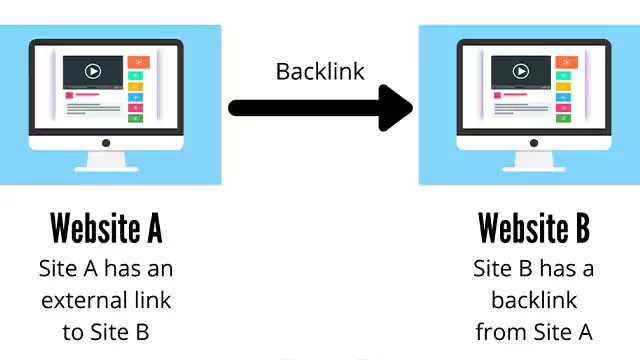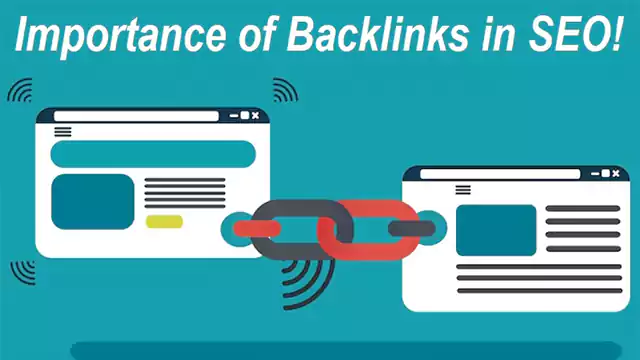It is common to compare Google to a contest for popularity that has thousands and thousands of websites competing to be the top of the pack that is influenced by numerous factors. In the midst of all the competitors, backlinks represent a “vote of confidence” from one website to the next which is a convincing sign of importance to Google.
A lot of business owners and marketers who have a basic understanding of SEO understand the importance of building links to a certain extent. Here, we examine the importance of backlinks as a result of SEO.
What is an Backlink?
Also referred to “inbound” or “incoming” backlinks occur when a website links to another site. For instance for example, if a mountain hiking website (Website A) links to a blog article that compares the top hiking gear (Website B) the hiking gear site will receive an affirmation of trust – or backlinks from the mountain climbing website.PIC

Why are Backlinks Important?
Backlinks are essential for SEO since they inform Google that another source considers your content to be valuable enough to include it in their content. If a site earns more hyperlinks from other websites, they conclude that the site has valuable content that is worthy of ranking highly in SERPs.
How Do Backlinks earned?
Backlinks are an essential element of an Off-site SEO strategy. Indeed they are the most important search engine ranking element! Backlinks can be earned in three main ways.
- Natural links are made available without any effort by the website’s owner. For instance the illustration of mountain climbing above would be an organic link even in the event that the hiking gear website was not involved in obtaining the link. One of the most effective ways to naturally gain natural links is by continuously creating content that is of high quality.
- Manual links are earned by completing link-earning actions. If the hiking gear site approached the climbing website and requested to link to the website, the link is a manually. Guest blogging on behalf of an appropriate website is a different method for getting a manual backlink. Make sure to include a include a link to your site within the blog’s content.
- Self-created links are generated when a manager of a website manually inserts a backlink in blogs, forums or online directory. Be aware that while self-created hyperlinks may seem like the most efficient method to get backlinks, a lot of methods tend to be ” black hat SEO,” methods that can harm the reputation of search engines. They are usually tagged with “no follow” tags.
Are all backlinks useful?
Although backlinks are generally beneficial, however, not all backlinks are equally useful as others. Certain types of backlinks are more beneficial to acquire whereas some should be avoided as much as feasible. Understanding the influences on backlinks is essential for linking development and assessing the strength of the backlinks profile.

1. Follow instead of. No follow backlinks
Site owners can determine whether a particular link is able to pass equity in the link or not. A link that is not followed does not transfer link equity commonly referred to as “link juice” – to the domain that is linking, whereas following links do. Although followed backlinks are more attractive but no-follow links on good quality websites can be useful to boost your reputation.
(Interestingly Local SEO strategy considers the follow and no follow links on relevant localized websites as equally beneficial.)
2. The authority of linking domains
Backlinks from linking domains with high authority usually provide greater quality (link value) than links that originate from low-quality, brand new or spammy websites. Backlinks from sites that are spammy are best avoided when possible.
3. Link Relevance
Google can tell if a backlink is insignificant. If a gluten-free bakery located in California connects to your brick-and-mortar outdoor gear store in Colorado this backlink isn’t very relevant and is likely to not be able to pass more link juice than that backlink from the mountain climbing website.
4. Link to the location
The design of a website is important for Google as is the location of a hyperlink on the page. For instance, a link is hidden in the footer of an article might not carry the same amount of credibility as one that is included in a relevant blog post’s paragraph.
5. Link number
A link that appears in the hundreds or thousands of hyperlinks on a single page is probably not as effective as a link that is cited by only a few. Beyond the equity of the link, the user is likely to be difficult to locate your site’s URL among the hundreds of links and then click through to your website, which would negate its value.
6. Anchor text
Anchor text refers to the visible words or characters which display hyperlinks in content. It is often with a unique color and underlined. In the preceding paragraph, “anchor text” is the anchor text used for the outbound hyperlink. Certain anchor text is considered SEO-friendly and has more credibility than other anchor text. Concise, relevant, and unique text is the best choice.
For example, connecting to the blog article with a link anchor “the importance of backlinks for SEO” is superior to linking to this blog post with the generic phrase “click here.”
